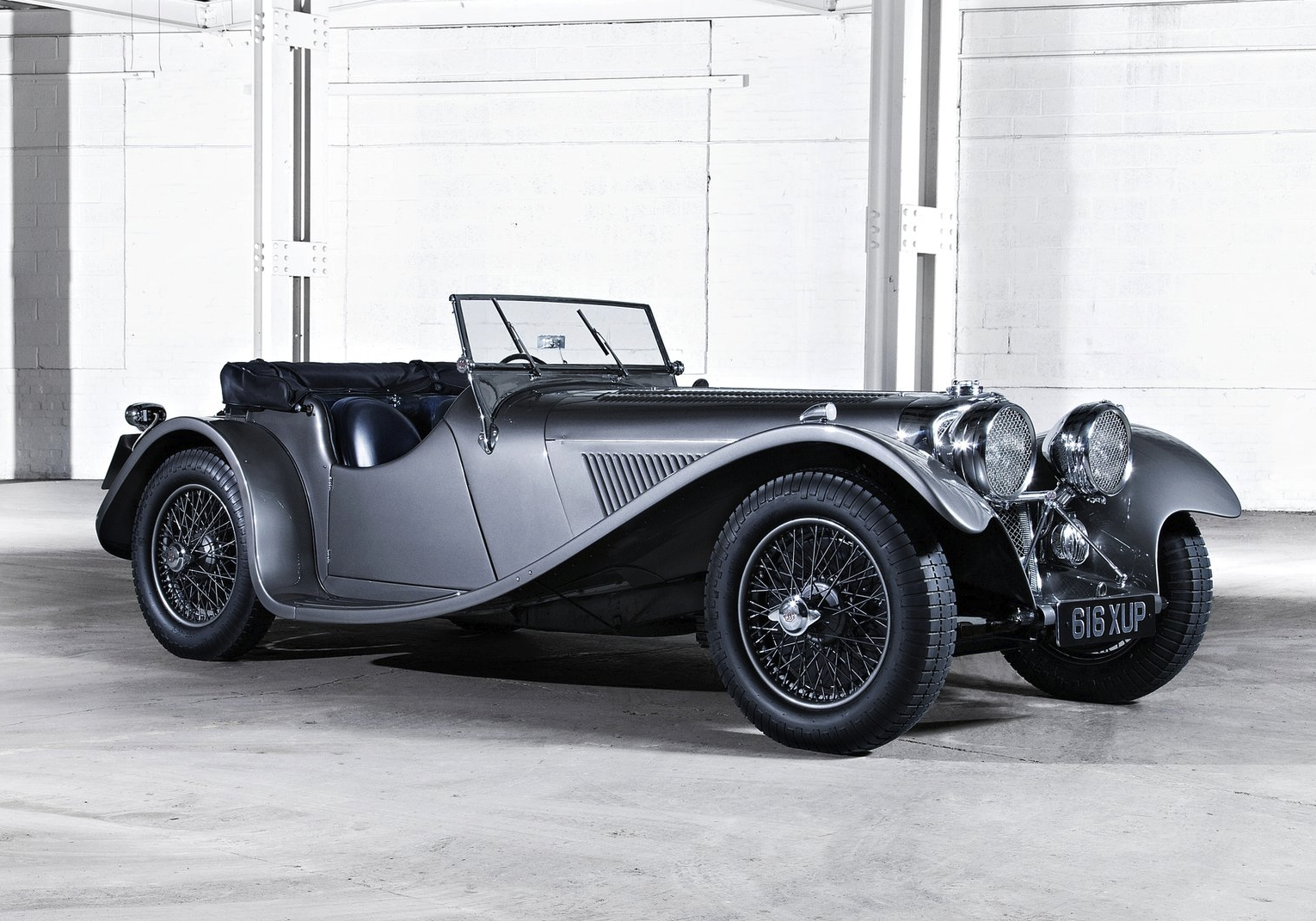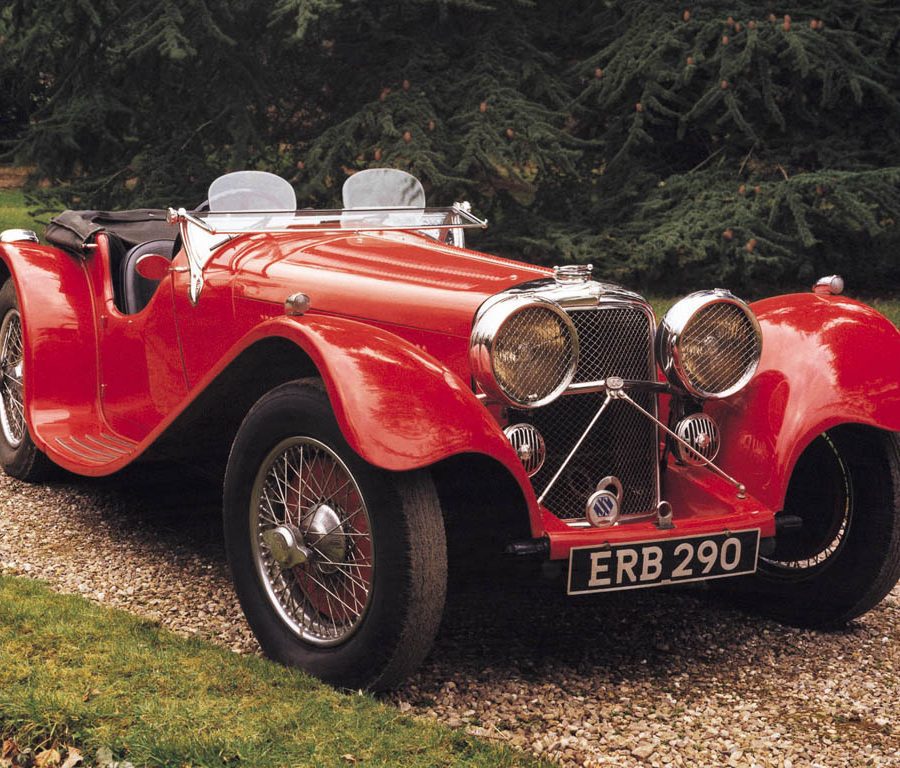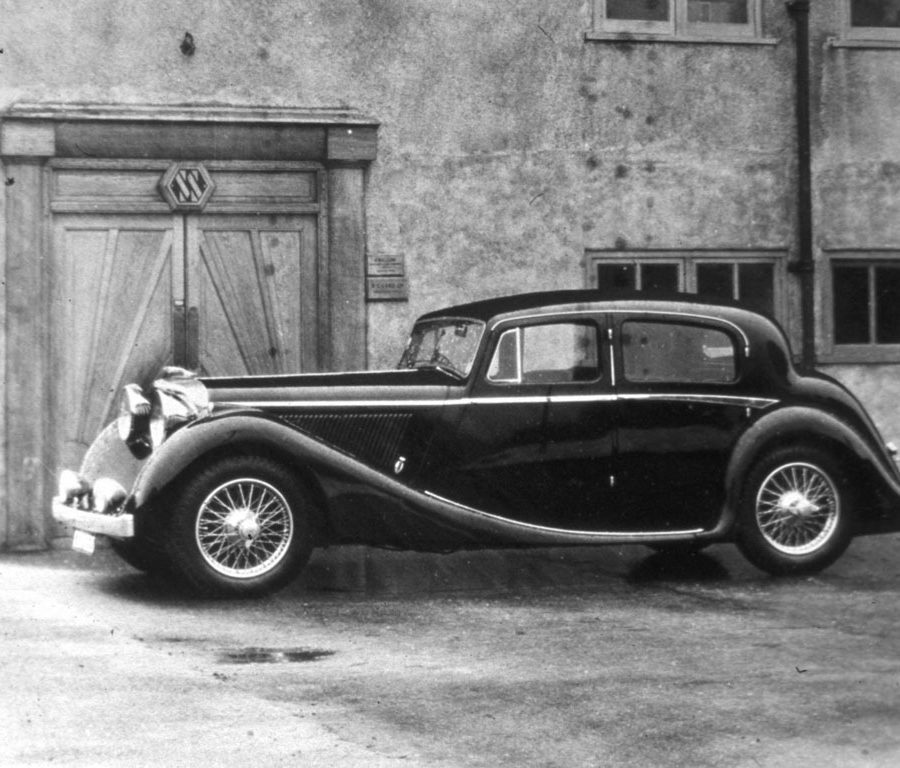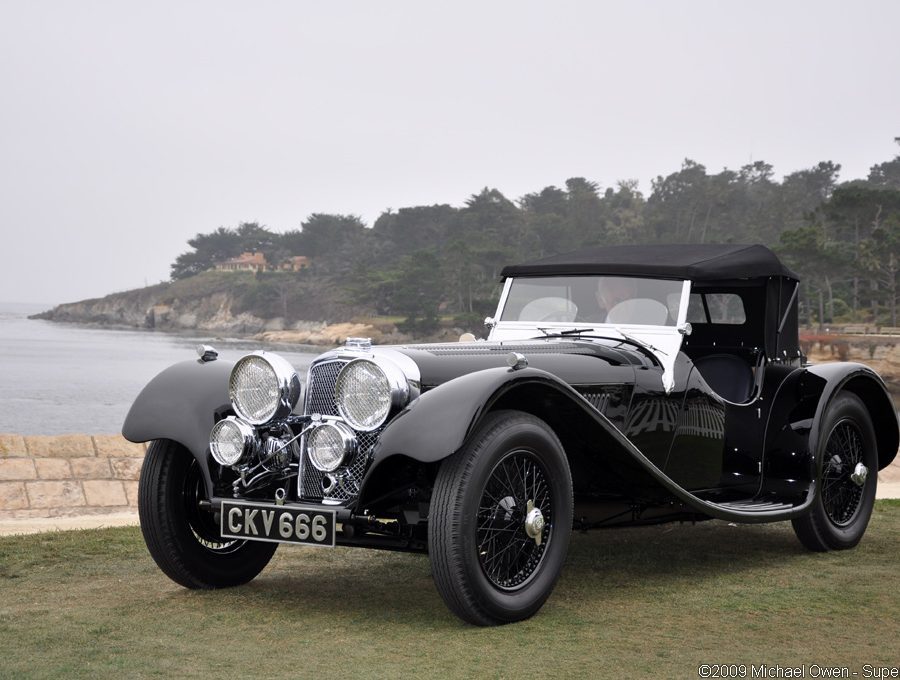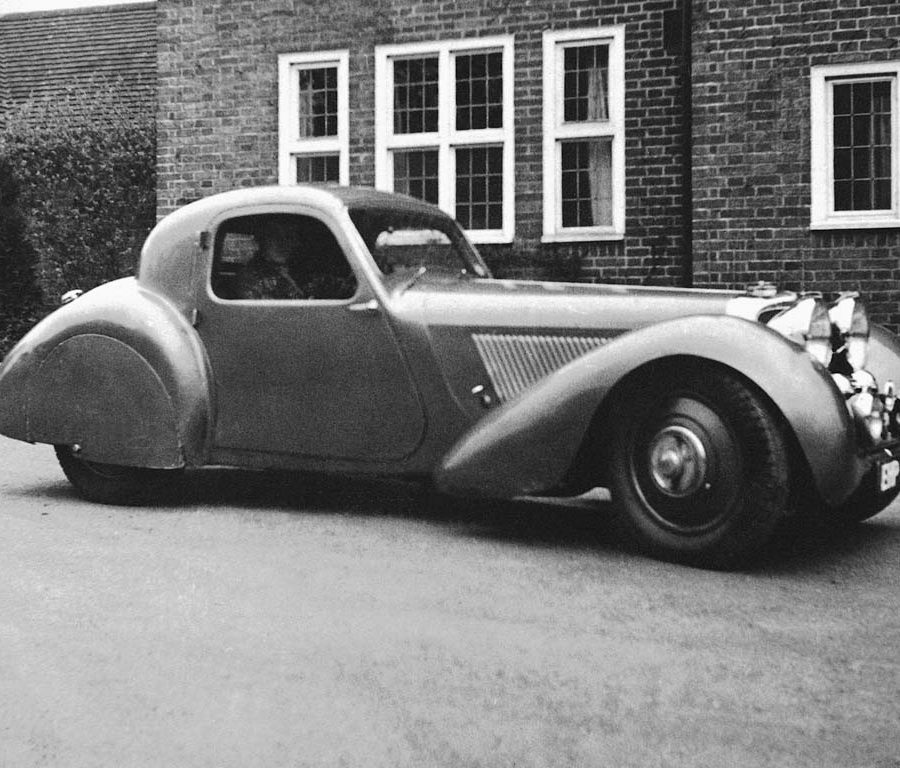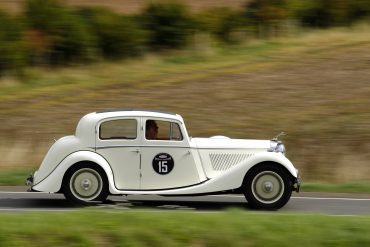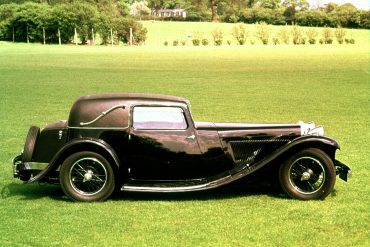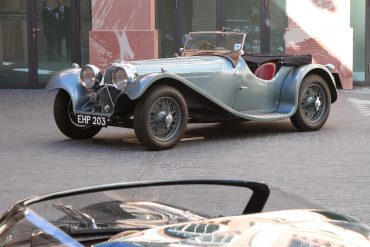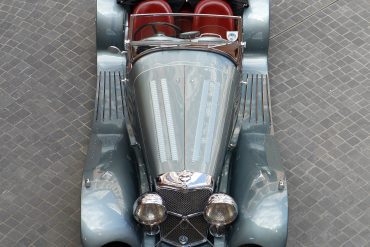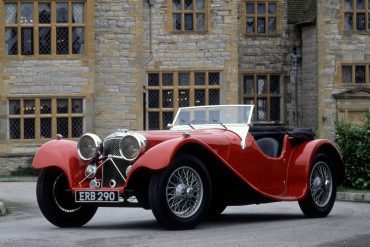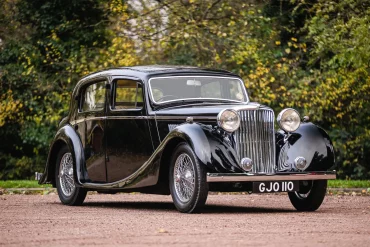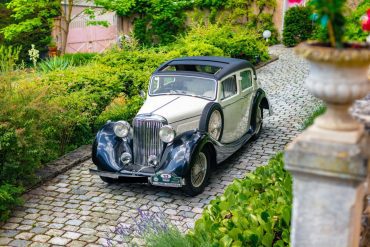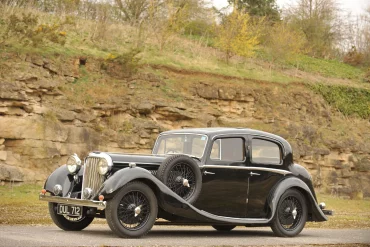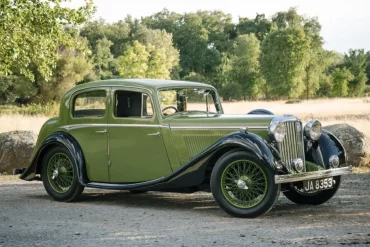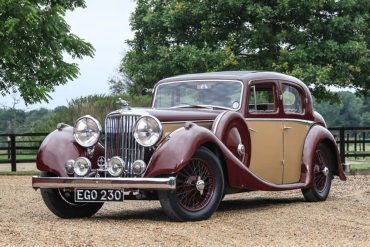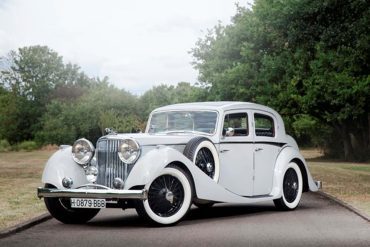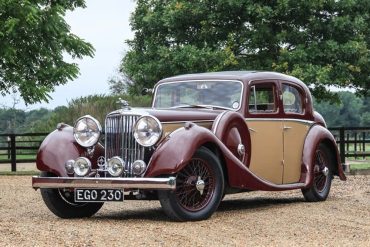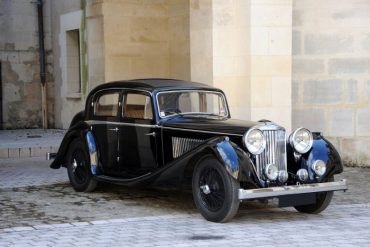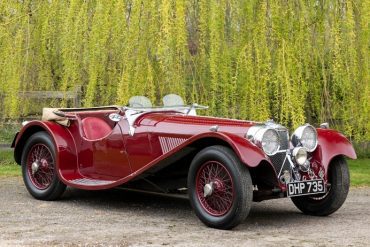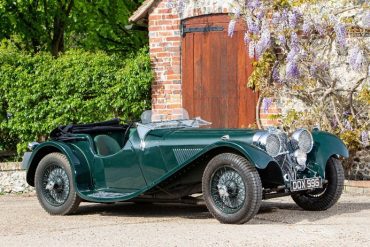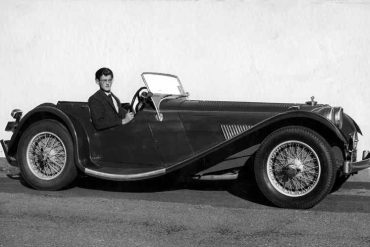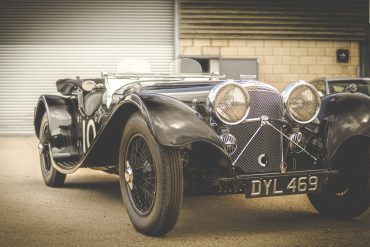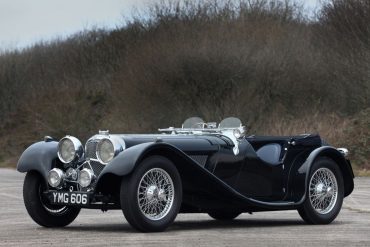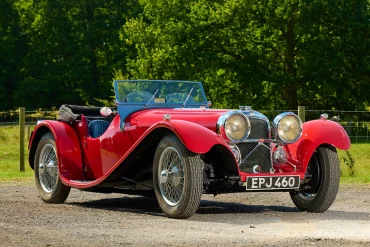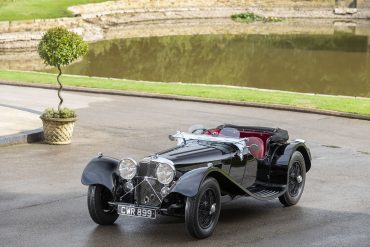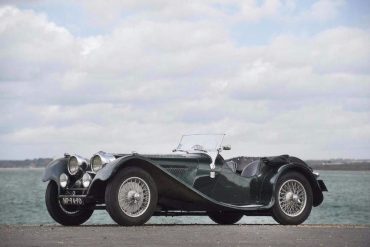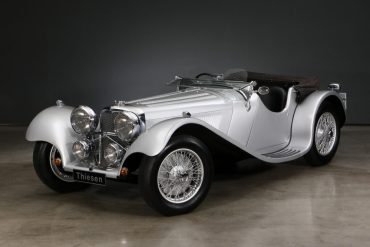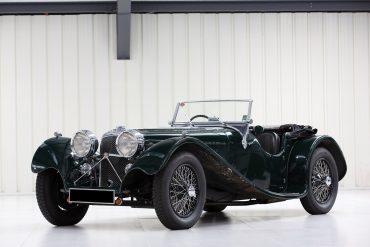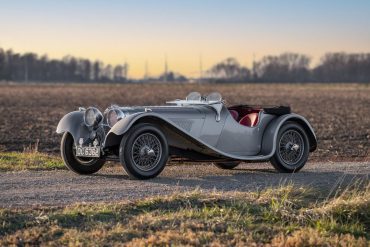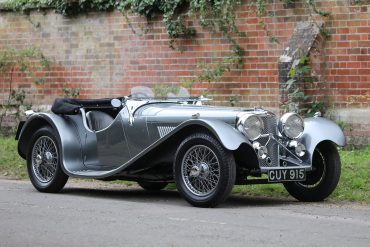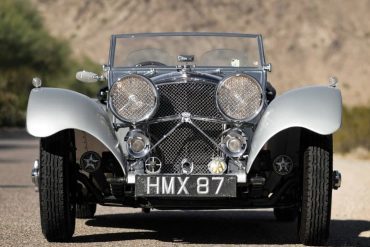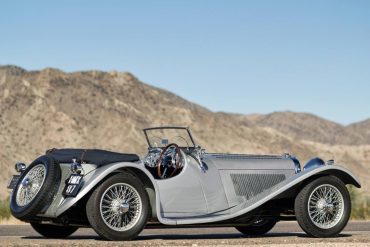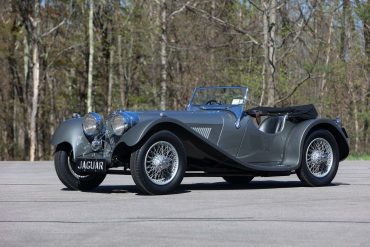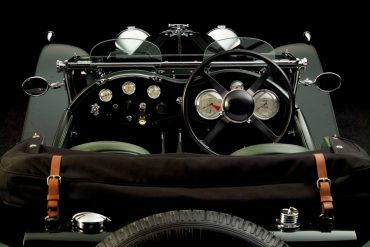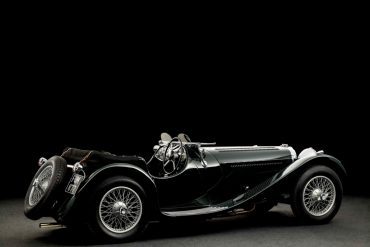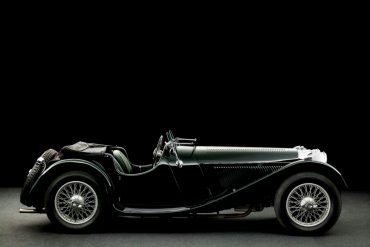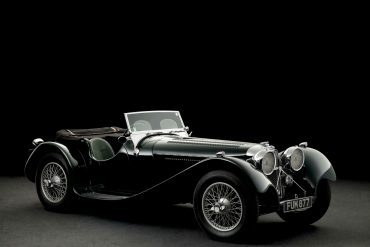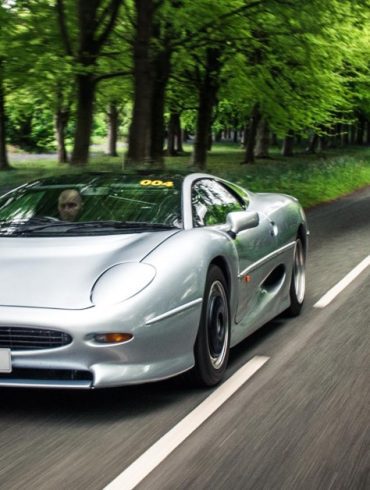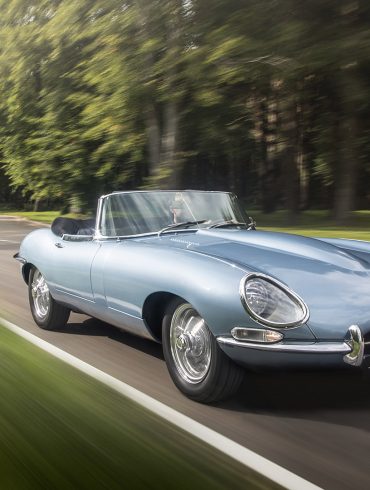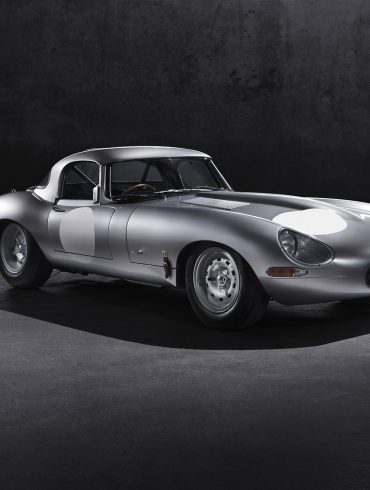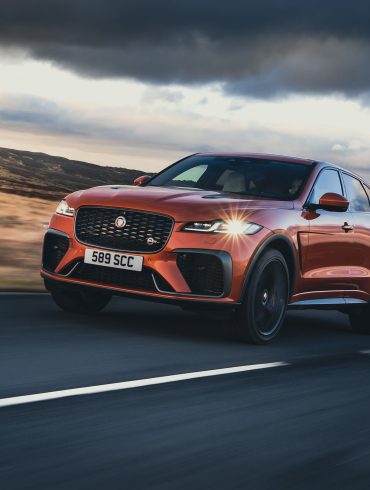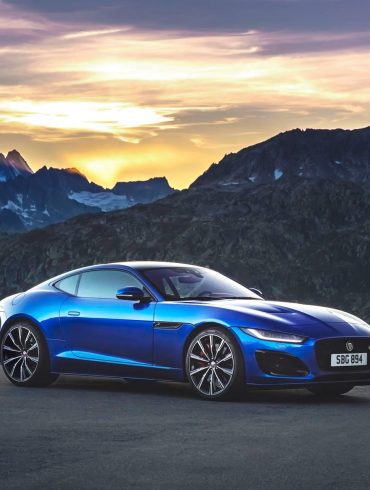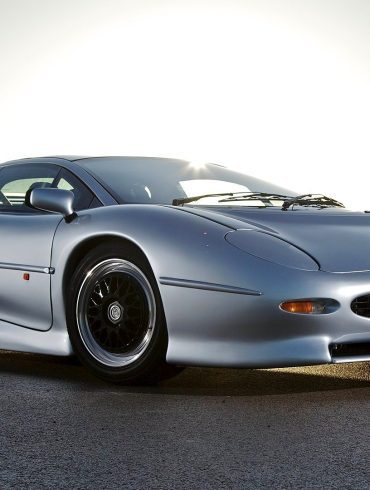1936 S.S. Jaguar 100 2½ Litre The quintessential pre-war British sports car is the 1936 S.S. Jaguar 100 also known simply as the SS100. These diminutive roadsters have all the hallmarks of a competitive race car in an attractive body reminiscent of Jaguar’s first tourers. This model was also the...
The SS Jaguars
1935 - 1950
SS cars were the forerunners of the Jaguar marque. Before the SS Cars Ltd company changed its name to Jaguar Cars Limited in 1945, it produced automobiles that epitomized its soon-to-be slogan "Grace, Space, Pace". In September 1935 SS launched their most significant new car, the first to carry the name Jaguar.
Overview
In September 1935 SS launched their most advanced and significant new car, the first to carry the name Jaguar, though then not as the brand but as a model name - the SS Jaguar 2 1/2 litre saloon.
Standard manufactured a new chassis to SS design and a Standard 6-cylinder engine was re-engineered by Harry Weslake to an overhead valve design, which Standard then manufactured specifically for SS. The rolling chassis was mated to a stylish four-door body, for sale at a very modest £385. To accompany this new model, SS also produced a smaller engined 1 1/2 litre 4-cylinder saloon using an existing Standard engine, priced at £295.
With the introduction of the SS Jaguars, all other car production ceased except for the SS1 Tourer, now produced under the SS Jaguar name.
Initially built using traditional methods of alloy and steel panels laid across an ash wooden framework, by 1938 SS moved over to all steel body production, at the same time increasing the model range to include a 3 1/2 litre version of the 6-cylinder engine. The company also produced a range of two-door drop head coupe models based on the same cars.
The superb new sports car design, which had been glimpsed just briefly as the SS 90, reappeared in similar form as the SS Jaguar 100. With a revised treatment around the fuel tank area at the rear, and more importantly, the adoption of the new chassis and engine, the company now produced a sports car to be proud of. For many, the SS 100 is a pre-war classic amongst sports cars. The price, incidentally, was just £395. This new model was to be used to considerable effect in competitions, both national and international. The model was discontinued with the advent of the war.
In 1936 the motoring journalist Tom Wisdom, driving with his wife Elsie, won the International Alpine Trials in an SS 100. A year later a team of three cars was entered by the factory in the RAC Rally, the premier rally event in Britain. The team took the Manufacturer’s Team Prize but outright success eluded them. Instead the event was won by a privately entered SS 100!
A new, enlarged 3½ litre engine had been developed. In September 1937, this engine, together with a new 1½ litre unit, joined the 2½ litre version in a completely revised model range.
The new models were not very different in appearance; distinguished from their predecessors by the lack of the side mounted spare wheel, but the range now employed ‘all steel’ construction.
Heynes had designed a further stronger chassis for the new body construction resulting in more interior space and bigger doors.
Prices ranged from £298 for the 1½ litre saloon to £465 for the 3½ litre Drophead Coupe. The new 3½ litre engine was fitted to the ‘100’ model and this gave genuine sports car performance with sixty miles per hour reached from a standstill in 10.5 seconds and a top speed of over 100 mph.
Production of the saloons and drop heads continued after the war, by which time the name of the company and the cars had been changed to Jaguar because of the perceived concern over the use of the insignia SS.
SS Cars Basics
Predecessor: Swallow Coachbuilding Company Limited
Founded: 2 September 1922 in Blackpool, England
Founders: William Walmsley and William Lyons
Fate: Continued as Jaguar Cars Limited on 23 March 1945
Successors: Jaguar Cars Limited
Headquarters: Coventry, England
Key people: William Lyons
Products: Automobiles and sidecars
Brands: SS Jaguar (cars), Swallow (sidecars)
Did You Know?
In 1935 the Jaguar name sprang upon the scene for the first time with a completely new saloon and sports car range. Sophistication was increasing, and now customers were offered four doors for the first time on an SS. Indeed so different were the new models that it was felt that a new model name was needed.
In 1935 came the first of the open two-seater sports cars known as Jaguar: the SS Jaguar 90, labeled as such for its claimed 90 mph top speed and produced between 1935 and 1937.
Supercars.net
Shortly after the SS 90 was launched, the SS100 open tourer appeared in 1936, almost at the same time that the SS Jaguar (later re-named as the Jaguar Mark IV) was launched. This last SS labeled car was offered as the SS 1½ liter, the SS 2½ liter, and the SS 3½ liter which were produced between 1935 and 1949 (interrupted by WWII).
Supercars.net


